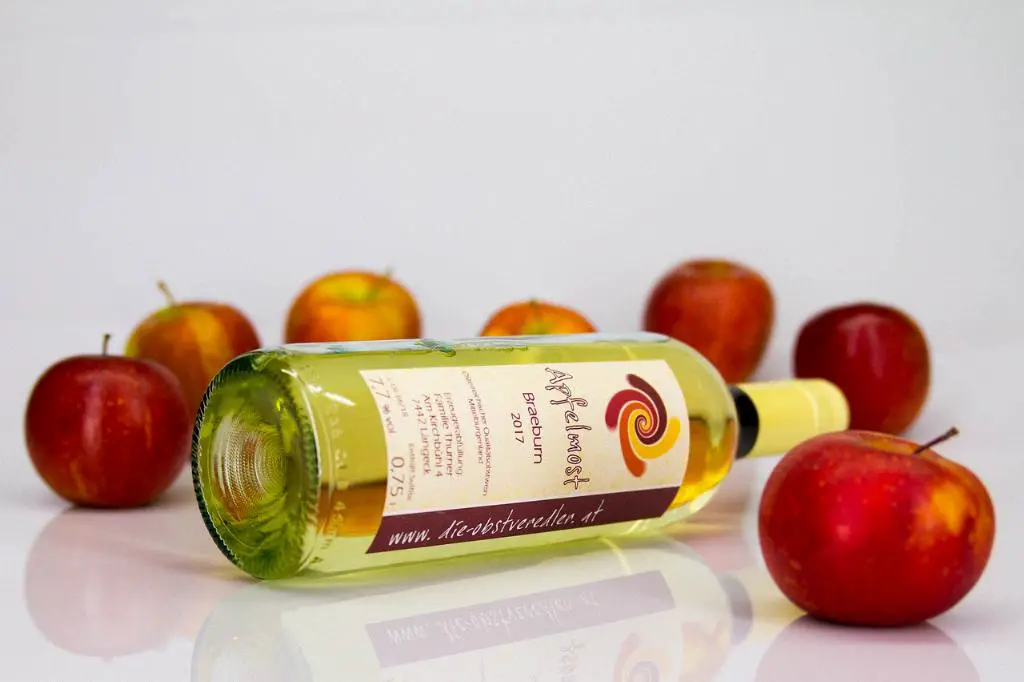Have you ever poured yourself a glass of freshly pressed apple cider, only to notice some mysterious sediment settled at the bottom of the jug? You’re not alone! Many people have wondered what exactly this stuff is and if it’s safe to consume. Let’s delve into the world of apple cider and uncover the truth behind this puzzling phenomenon.
Microbial Hazes and the Culprits Behind Them
One possible explanation for the sediment at the bottom of your apple cider jug is a microbial haze. This haze is often caused by spoilage yeasts or heavy infestations of bacteria, including a slow-growing yeast that forms clumps in unsweetened cider. While this microbial activity may not significantly affect the flavor of the cider, it’s always best to avoid any potential microbial problems.
The Impact on Taste and Quality
Fortunately, the sediment found at the bottom of the apple cider jug is not harmful and does not pose any health risks. However, it’s important to note that the presence of microbial haze may give the cider an off-putting taste or smell. It’s always recommended to inspect the cider before consuming it to ensure optimal taste and quality.
The Natural Process of Sediment Formation
So, how does this sediment actually form in the first place? Well, when apple cider is made, it goes through a process called fermentation. During this natural process, yeast consumes the sugars present in the cider and converts them into alcohol and carbon dioxide. As a byproduct of this fermentation process, a sediment is formed, which eventually settles at the bottom of the jug.
Why Does Some Cider Have More Sediment Than Others?
The amount of sediment in apple cider varies depending on various factors, such as the production methods and the type of filtration used. Cider that is minimally processed or left unfiltered is more likely to have a higher concentration of sediment. On the other hand, commercially produced and filtered ciders tend to have less noticeable sediment due to the removal of solid particles.
The Role of Pectin in Sediment Formation
Another factor contributing to sediment formation is pectin. Pectin is a natural substance found in apples and other fruits, and it acts as a gelling agent. When cider contains high levels of pectin, it increases the likelihood of sediment formation. This is why some apple ciders have more visible sediment than others.
The Importance of Proper Storage
If you want to minimize the sediment in your apple cider, proper storage is key. Keep your cider refrigerated and upright to allow any sediment to settle at the bottom of the jug. When pouring the cider, do so carefully and avoid disturbing the sediment. This way, you can enjoy a clearer glass of cider with less visible sediment.
Should You Consume the Sediment?
While the sediment in the apple cider is not harmful, it’s a personal preference whether you choose to consume it or not. Some individuals prefer to discard the sediment before drinking the cider to ensure a smoother texture, while others don’t mind the presence of sediment and consume it without any qualms. Ultimately, the decision is up to you.

Final Thoughts
Next time you come across that sediment at the bottom of your apple cider jug, you can confidently identify it as a microbial haze, a byproduct of the natural fermentation process. Remember, it’s safe to consume, but it may affect the taste and smell of the cider. Proper storage and personal preference play a role in determining whether you choose to consume the sediment or not. Cheers to enjoying the delightful flavors of apple cider, sediment or not!
